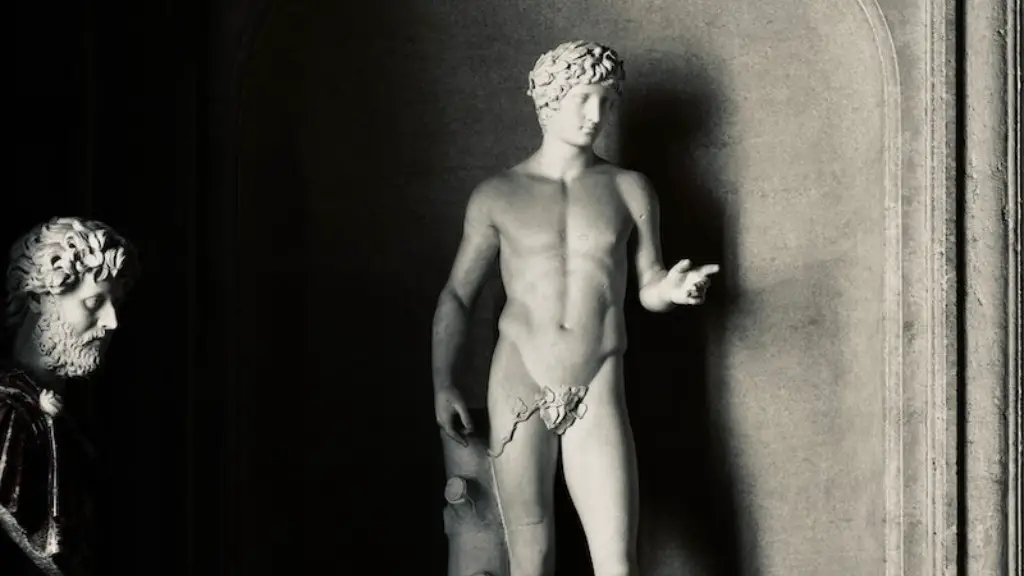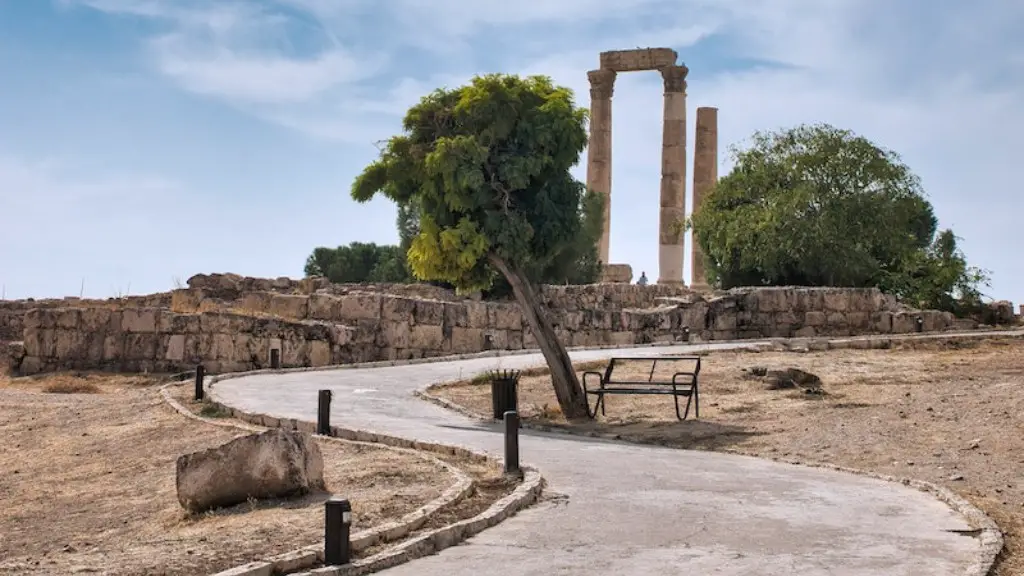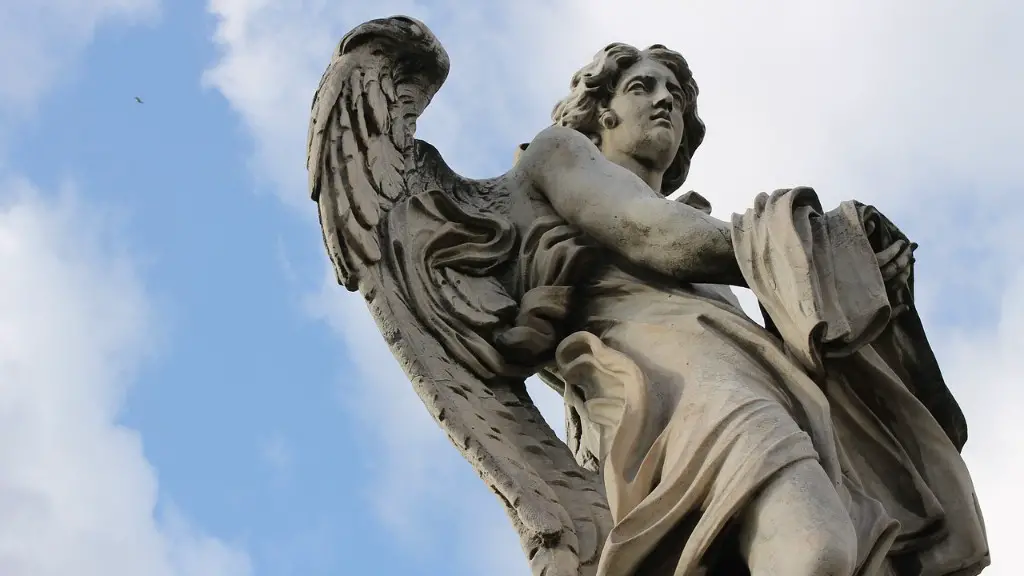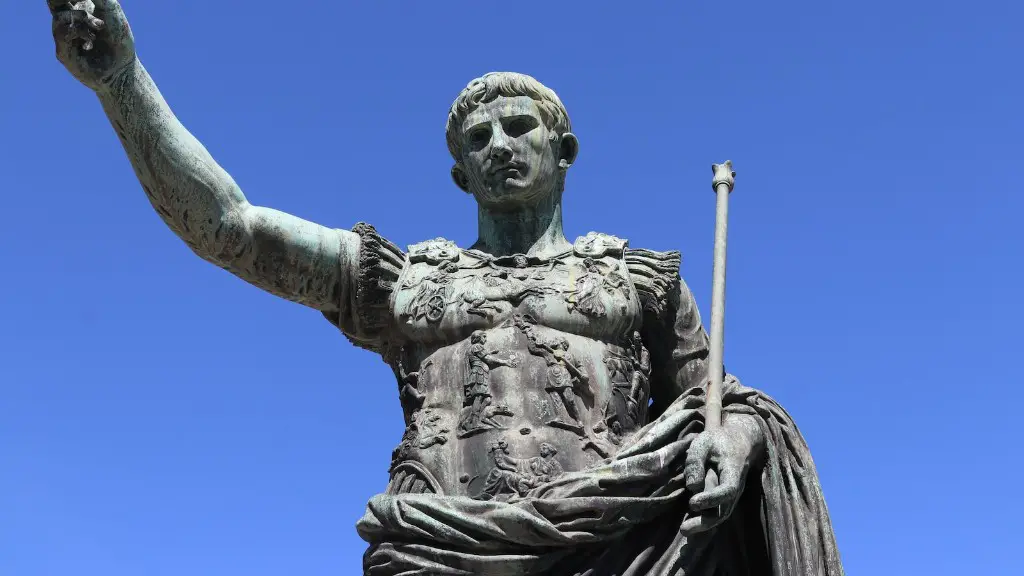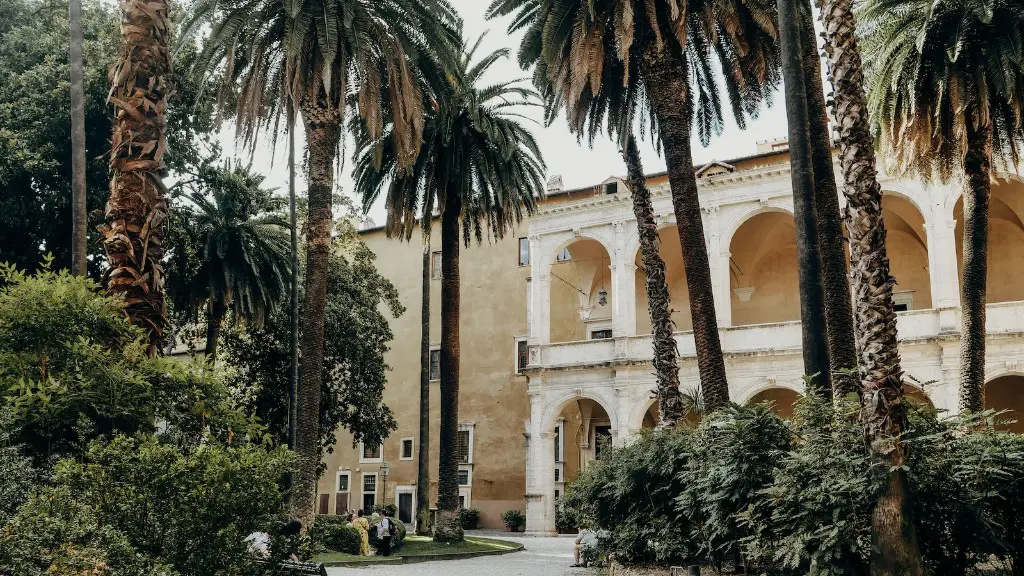What year was the Colosseum built in Ancient Rome? This is one of the questions that has puzzled historians for centuries. Since the grand and majestic structure is a significant part of the history of the city, it is important to know the answer. The Colosseum was built between 70 – 72 AD and is one of the most recognizable and iconic landmarks in the world.
The Colosseum, originally known as the Flavian Amphitheatre, is a large ampitharetrical structure located in the heart of Rome. It measures 188 meters long, 156 meters wide, and 48 meters high. It was this imposing and awe-inspiring structure that made it so popular since the Roman Empire.
The construction of the Colosseum was commissioned by the Emperor Vespasian and became a very important part of the Roman society. It was designed to be used for several purposes, from theatre shows and public games performances to public spectacles and gladiator fights. This was a major event for the citizens of Rome, as it provided for entertainment and distraction from their daily lives.
The Colosseum was built using the opus caementicium, a mixture of mortar and concrete of which its external walls were made of. It had around 80 entrances that allowed it to be filled with around 50 thousands spectators at once. Its capacity was so really impressive and showed the immense power of the Roman Empire.
The Colosseum still stands tall today and can be visited by tourists of all ages. It is a reminder of the grandeur of the Roman Empire and its legacy. Its vast size and imposing architecture make it an unforgettable experience for visitors. Although the Colosseum was constructed in the 70s AD, it still stands as one of the greatest monuments of the Roman civilization.
Design and Repair of the Colosseum
Throughout the centuries, the Colosseum underwent several repairs and modifications to fit its role of an entertainment venue. The earthquake of 847 AD caused major damages to this colossal structure. When the Goths officially settled in Rome in the year 537, the Colosseum was stripped from its marble decorations as a source of building materials. Then, in the XII century, Pope Innocent III decided to use it as a fortress, thus walling its exterior.
In the following centuries, the Colosseum’s structure was completely restored and decorated with marble and stucco in different parts. It was also connected to the religious practices of the Roman Catholics and dedicated to the Virgin Mary. By the XIX century, some of the northern part of the Colosseum was restored.
From then on, the Colosseum has been the focus of conservancy efforts to preserve its impressive architecture. Its restoration was officially completed in 2000 when the Colosseum was declared as a World Heritage Site by UNESCO.
Evolution of the Colosseum
The Colosseum has evolved in its purpose over the centuries. Though its main purpose was to serve as an entertainment venue for Roman citizens, today its main use is for tourism. The Colosseum is one of the most visited sites in the Italian capital and one of the must-sees for people who choose to visit Rome. This is mostly due to its historical relevance and incredible architecture.
The Colosseum also serves as an important reminder of the great civilization that once inhabited the Italian peninsula. It is a symbol of the splendor and grandeur of the Roman Empire, and its presence in the city today is an important source of pride and admiration.
Over the years, the Colosseum has seen different uses. It has been used as a fortress and a temple, a theatre and a market, and a site of celebration and mourning. It is through these changes of purpose that the Colosseum has become the iconic global landmark that it is today.
Maintenance and Repairs
The maintenance and tourists’ visits of the Colosseum have caused some degradation to the original structure. This has prompted the need for frequent repairs and conservation efforts. Since the Colosseum is an important landmark, preserving its original form is essential.
The restoration works have been ongoing since the XIX century. However, it is only recently that the Italian government has increased its efforts to conserve the Colosseum. Today, the site is incredibly well preserved and is an important example of how the Italian government values its cultural heritage.
With the help of modern technology, the restoration works have become faster, more accurate and efficient. This is why today’s visitors of the Colosseum can appreciate its original form in all its beauty. All these efforts reflect the importance of preserving this incredible structure.
Significance of the Colosseum
The Colosseum is one of the most iconic and impressive structures of history. It is a reminder of the legacy of the Roman Empire, and of how it has shaped our world. It is also a representation of the ingenuity and grandeur of Roman architecture, and its presence in Rome is a source of great pride.
Every year, millions of visitors travel to Rome to admire the grandiose architecture of the Colosseum. Its grand and imposing presence stands as an example of the greatness of the Roman Empire and its incredible achievements. This is why it is important that we preserve the Colosseum and honor its cultural significance.
Contribution to Society
The Colosseum has become an important symbol of not just the Italian people, but to everyone and anyone around the world who appreciates its beauty and historical relevance. It has been featured in numerous films and TV series, and its presence at the heart of Rome has made it a significant part of modern culture.
The Colosseum has also become a symbol of resilience and strength, which makes it inspiring for people to visit or experience. Its greatness shows how powerful and influential the Romans were, and it is a significant reminder of their culture.
In the end, the Colosseum stands tall today as a reminder of the values of the Roman Empire, an ancient civilization that has left behind a lasting legacy. It is a symbol of greatness and grandeur, and it will continue to be an important landmark in Rome for many years to come.
Tourism and Preservation
The Colosseum is an important symbol of heritage and culture, and its preservation is essential for its longevity. Due to its immense popularity and the millions of tourists visiting the site every year, damage has been caused to the original structure. This is why it is important that the Italian government and private entities invest in preserving this iconic site.
Preservation efforts must also go beyond the physical structure, and take into account the cultural significance of the Colosseum. It is essential to understand it as not just a structure, but as a living monument to the history and heritage of the Italian people. As such, it must be respected and preserved for future generations.
The Colosseum is a significant part of the Roman Empire and a reminder of its greatness and power. It is an iconic landmark and a symbol of cultural heritage, and it is essential that we continue to protect it for future generations.

